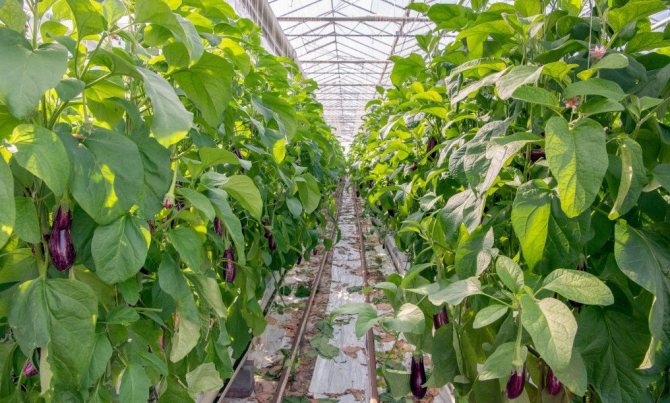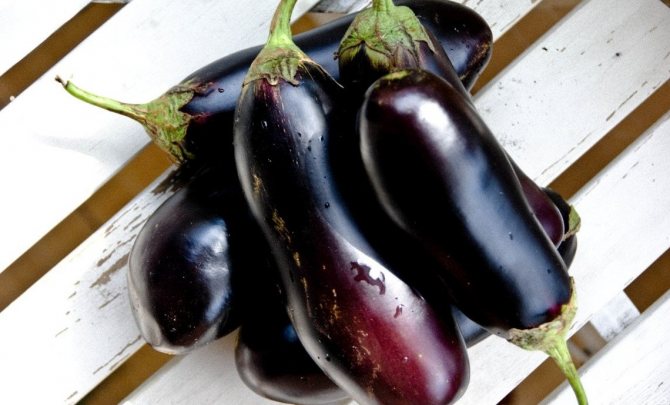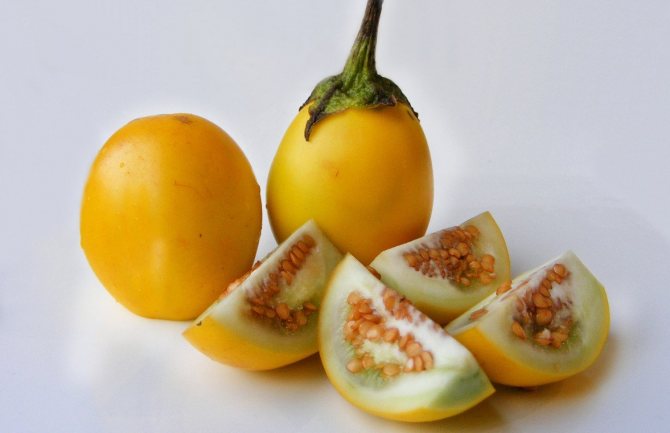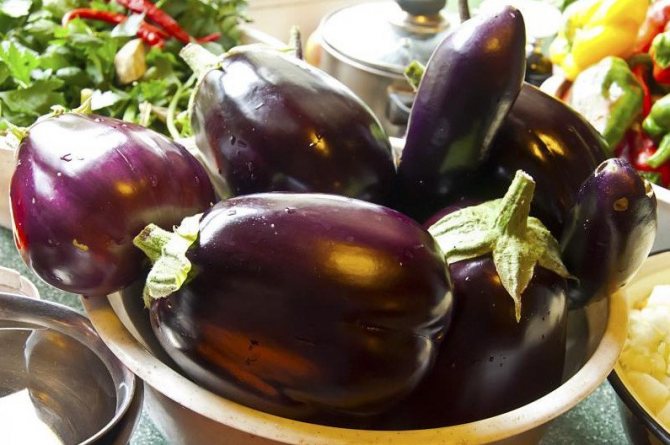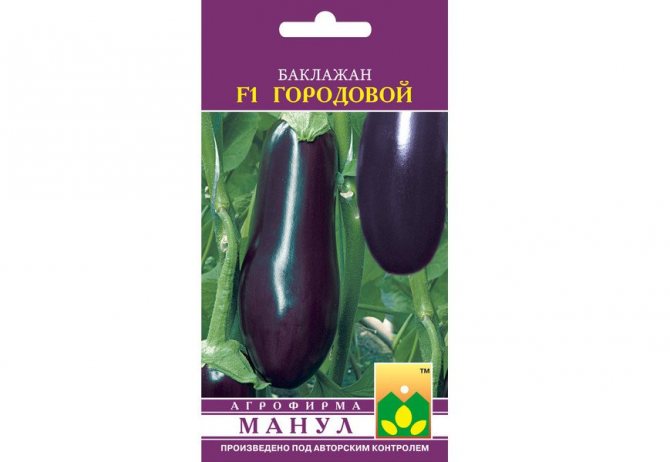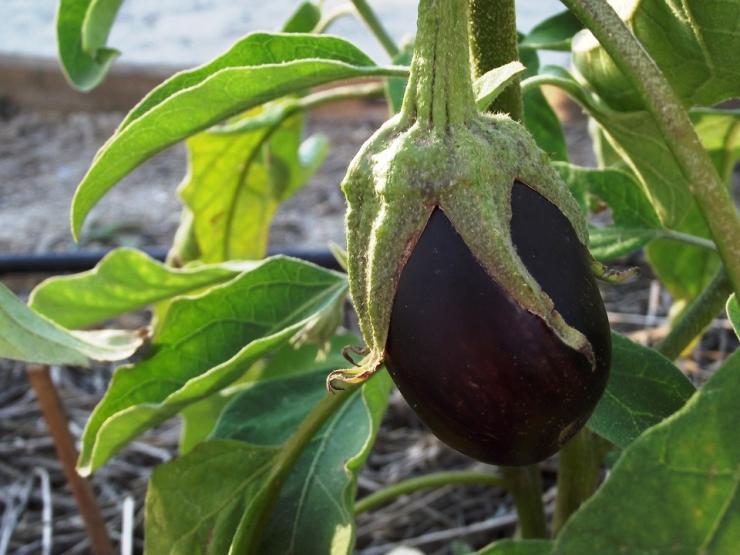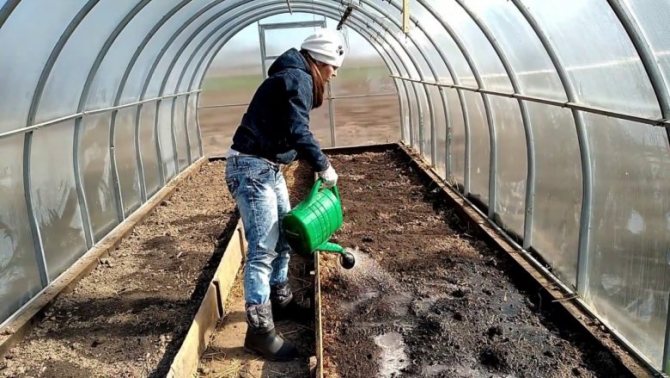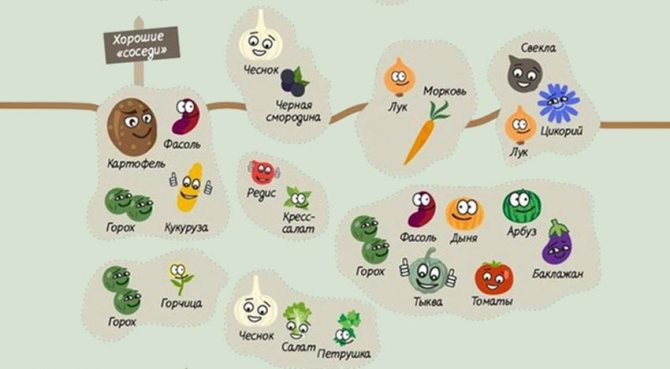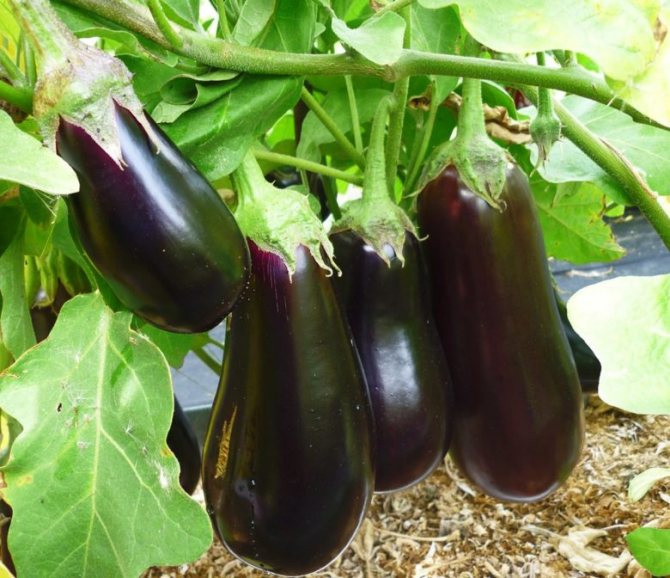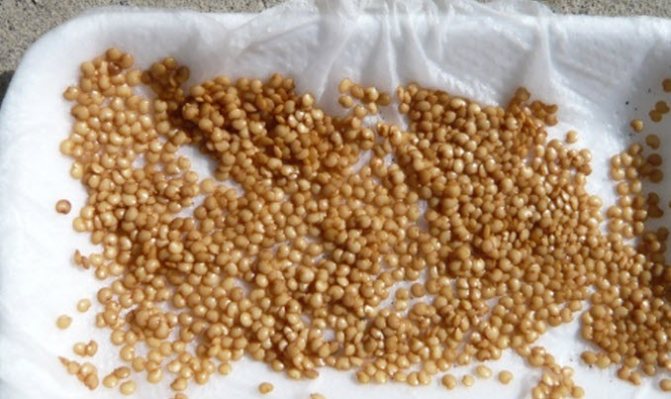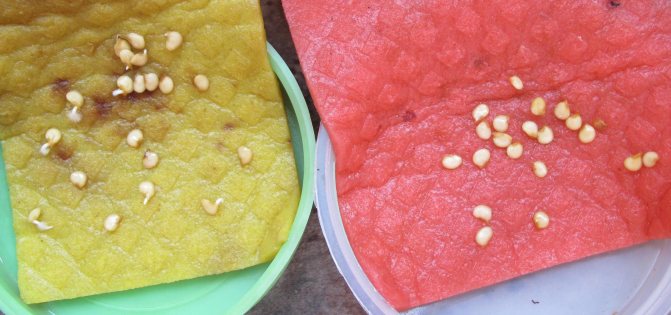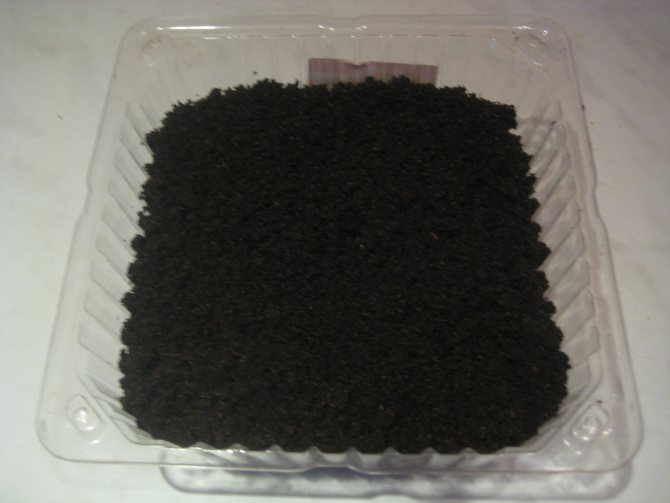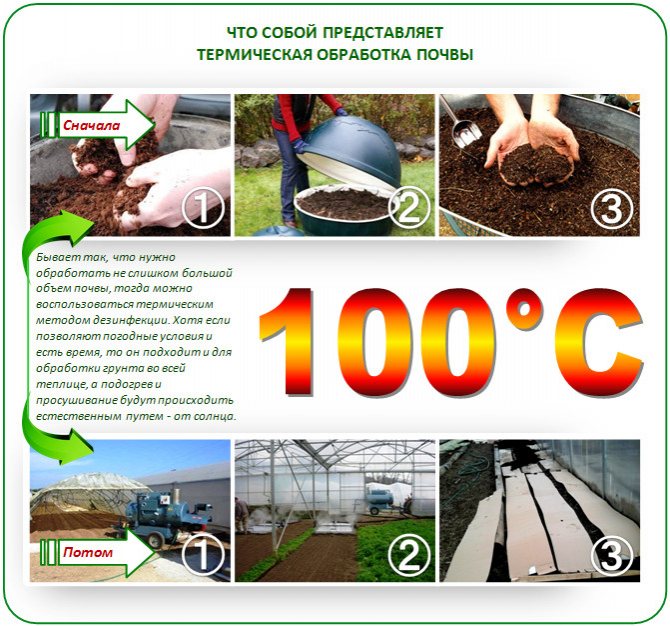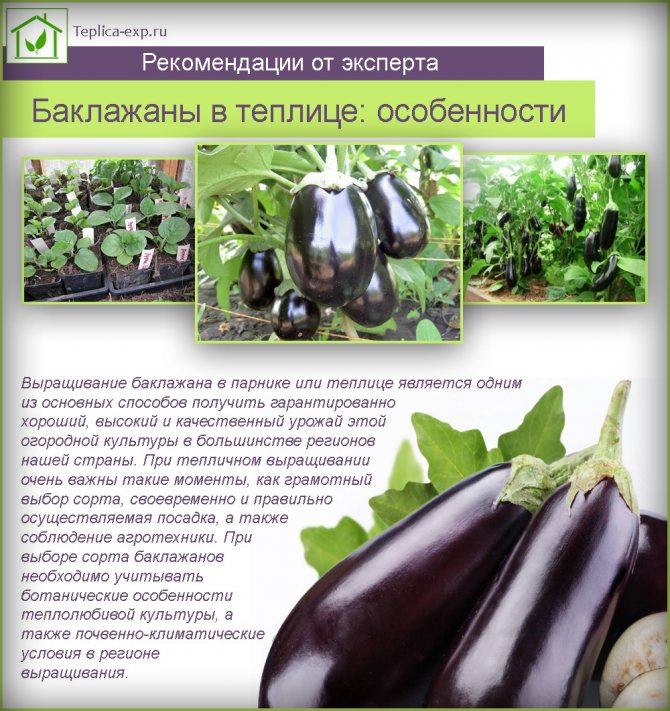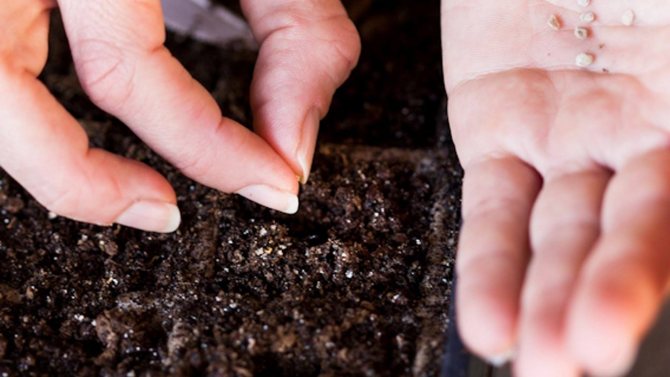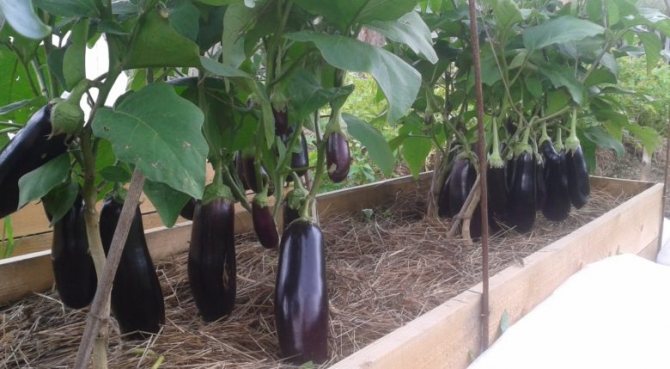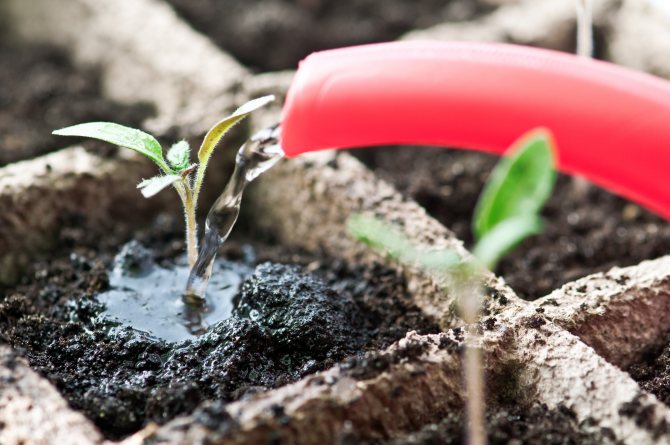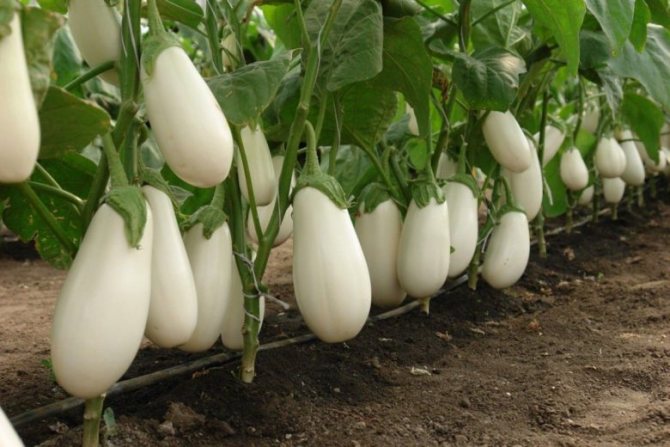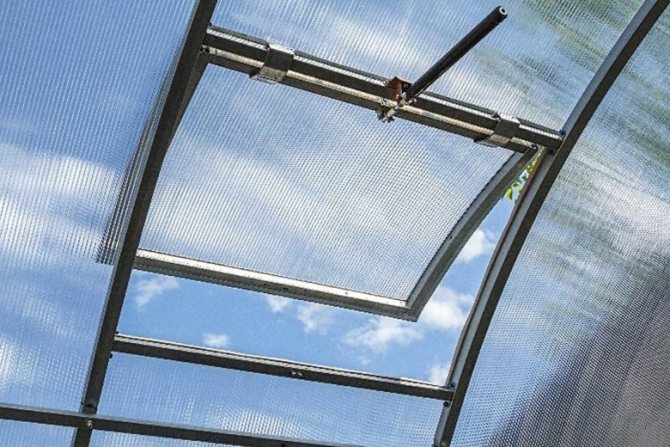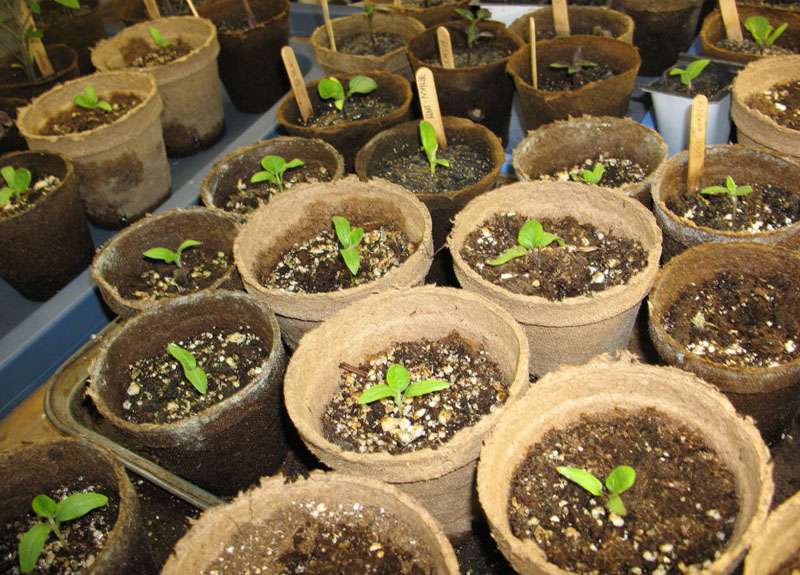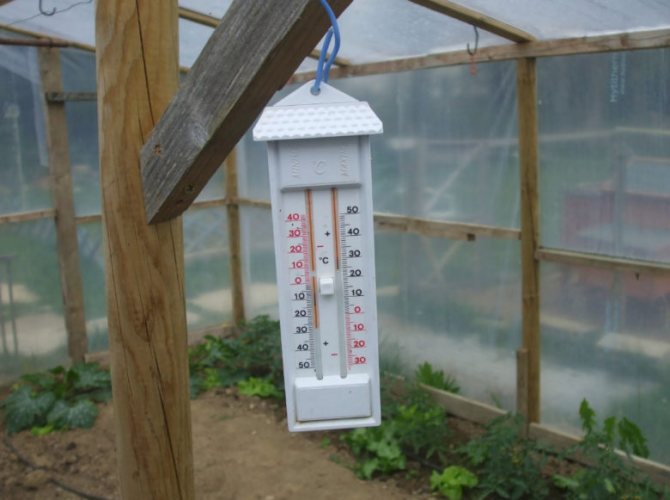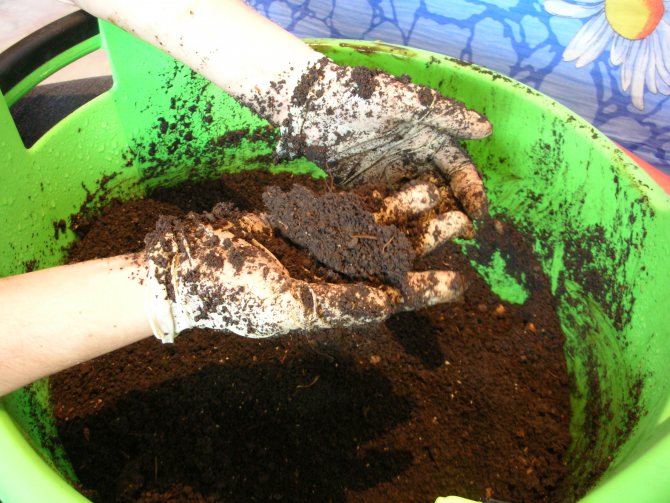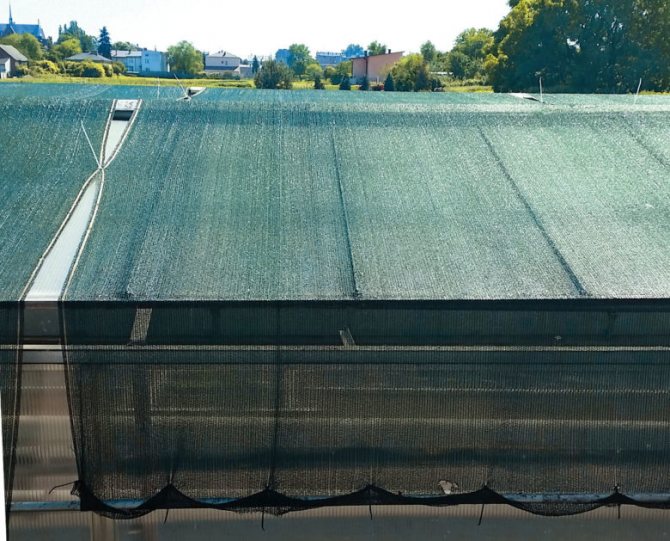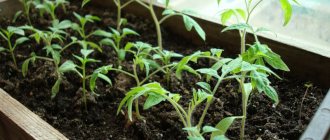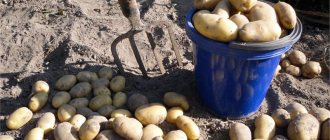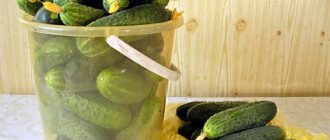Southeast Asia (Burma, India) is considered the homeland of eggplant, where this vegetable is popular as a cucumber in Russia. Eggplant came to our country at the end of the 17th century - it was grown in the south.
At the end of the 80s of the XX century, breeders created varieties for the central and northern regions - frost-resistant, short-fruited, resistant to fungal diseases. Today, Russian gardeners successfully grow eggplants in central Russia, the Urals, Siberia and the Far East.
Eggplant fruits are nutritious and healthy. They contain B vitamins, vitamin C, pectins, potassium, magnesium and copper salts, more than 20 trace elements necessary for the human body and not found in other vegetables. The rarest of these is germanium.
This is a thermophilic plant with a long ripening period, therefore, in the temperate climatic zone, it is grown only through seedlings. By following our advice, you can grow eggplant in your garden.

Choosing a variety or hybrid for greenhouse cultivation
After the decision has been made to try to grow an eggplant crop, you should decide on the choice of seeds: use hybrids or varieties. It is necessary to make the right choice, taking into account the growing conditions and the goals that the gardener pursues.
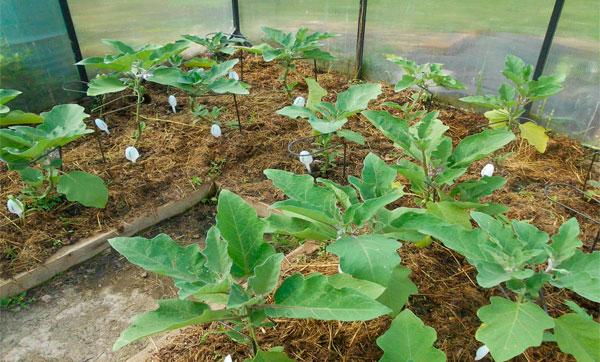

In general, there are several categories into which hybrids and varieties of eggplant can be divided. Here, the main criterion for dividing is the ripening period of vegetables:
- early with a ripening period of about 120 days;
- medium early (120-130 days);
- mid-season (125-130 days).
Eggplants in polycarbonate greenhouses can be cultivated for absolutely any ripening period, and in the open air you will have to be content with only the early ones.
Varieties may differ in the size and color of the fruit or the bushes themselves. They can be short, have a long or medium-sized stem. By the way, hybrids, not varieties, have the maximum yield, and it is they who are planted by those who want to get a lot of fruits.
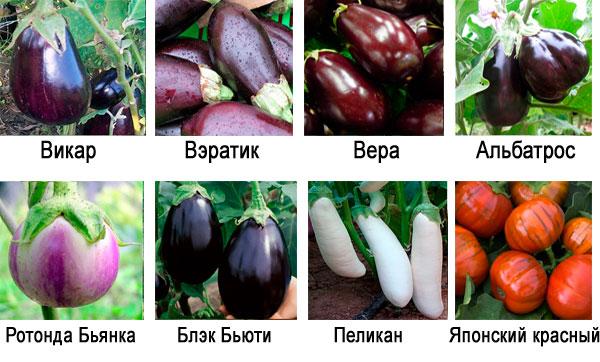

Popular varieties
The key to success, especially for an inexperienced summer resident, is the right choice of variety. They can be different in terms of ripening, bush height and requirements for growing conditions.
Table. Popular varieties of eggplant for growing in a greenhouse.
| Variety | Description |
| Purple Miracle F1 | An early maturing, medium-sized hybrid, bearing fruit in the form of a cylinder of dark purple color. The mass is small - about 135 g. The dense pulp is not bitter, the taste is pleasant. |
| Dolphin | Medium early high-yielding variety. Grows well in greenhouses, vigorous. Saber-shaped fruits of white-lilac color and weighing up to 450 g have excellent culinary qualities. |
| Nutcracker | An early ripe medium-sized variety (the first fruits can be harvested as early as 1.5 months after planting the plants in the greenhouse). Gives a bountiful harvest, is very unpretentious to growing conditions. Fruits up to 350 g, oval, elongated. Stored well. |
| Polundra | Ideal for preserving and creating culinary masterpieces. Mid-season greenhouse variety. Medium-sized. Fruits are small (up to 230 g), pear-shaped, white with pinkish stripes. The pulp is tender, white. |
| Bagheera F1 | Mid-season large hybrid, giving dark purple oval fruits weighing up to 350 g with tender pulp. Not afraid of tomato mosaic. |
Growing eggplant is tricky, but worth it. Consider it a challenge, but nothing beats the wonderful homemade vegetables. Well, the taste of eggplant and its usefulness have been known for a long time. That is why many gardeners are engaged in the cultivation of this crop. Maybe you should give it a try?
Growing seedlings for planting in a greenhouse
One of the main stages of obtaining an excellent eggplant harvest is the correct cultivation of seedlings for planting at home. Successful cultivation of tiny plants is a guarantee that you will be able to harvest many tasty fruits in the fall. Let's consider in more detail how to plant eggplants for seedlings and do it right.
Most often, eggplants are grown in small peat pots or cups. Their diameter should be about 8 cm, since the roots of these crops are quite demanding on the conditions of planting and existence. The soil should be clean, moreover, planting seedlings should be done in loose soil. The soil mixture can be prepared by mixing 5-6 parts of turf, 3-4 parts of humus and adding 1 part of sand to this. The soil can be slightly fertilized by adding a little mineral fertilizers - 5-10 g of potash and nitrogenous and about 2 g of phosphorus per bucket of soil.
In which month you can plant eggplants is determined according to the recommendations given on the package with seeds, as well as when deciding to focus on the climatic conditions of the region, growing conditions in general. Usually it is recommended to plant seedlings in March or February, according to the lunar planting calendar.
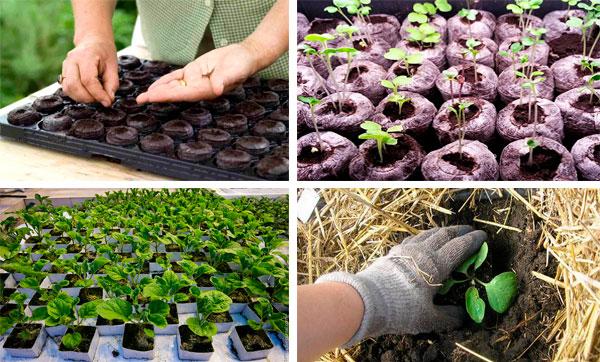

Eggplant bushes need good care. Watering the seedlings should not be done often, but it is important to ensure that the soil does not dry out, does not crack. Top dressing is done 2-3 times with a solution prepared from 30 g of potassium salt, 50 g of urea and 125 g of superphosphate (the substances are diluted in 10 liters of water). This amount is enough to feed about 2-3 m2 of soil. When the sprouts get a little stronger, the seedlings are hardened, taking them outside in warm weather in the morning (the air temperature is at least +15 degrees). In this case, the plants should not stand in a place blown through by drafts or in direct sunlight. After the appearance of the 4th leaf, the bushes can be moved to the greenhouse, if temperature conditions permit.
We form the bush correctly
Finally, watering and feeding gave a visible result - the seedlings began to grow intensively. If you miss the moment and let the process take its course, you can mentally say goodbye to at least half of the harvest.
The situation is not in favor of the harvest - during the period of intensive growth, dormant buds awaken in the axils of the leaves and instead of the formation of buds and ovaries, you get a huge green bush without a hint of flowers and future fruits.
Eggplants can be grown without resorting to shaping at all - just remove the yellowing leaves. Many fruits are formed, but small. An important fact should be taken into account that it is precisely shaping that can accelerate the onset of fruiting.
Some gardeners take the path of least resistance. The process of forming an eggplant bush when grown in a greenhouse is limited to plucking out the so-called “crown” flower, after removing which branches of the second order begin to grow in the eggplant.
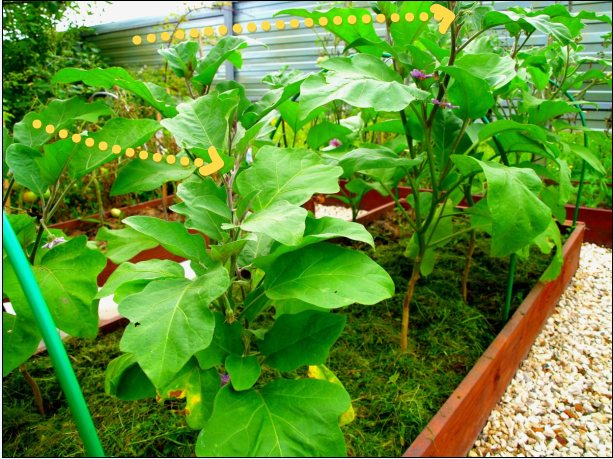

To make the fruits larger, some gardeners, when growing in a greenhouse, pinch and pinch eggplants. This process is clearly presented in the YouTube story about the formation of this culture.
All bush-forming operations should be stopped when the first ovaries appear. It is very undesirable to injure the plant. At the end of the season, it is advisable to pinch the tops of the shoots and cut off all the buds so that the plant directs all the forces to the formation and maturation of the last remaining ovaries.
Post Views: 389
Greenhouse requirements
Small eggplants do not tolerate cold weather.At a temperature of only + 1 ... + 3 degrees, they can already die. And if the bushes will be planted in the greenhouse early, then it is important to think over how to easily and quickly warm up the polycarbonate greenhouse. The easiest way is to follow the weather forecast and, in case of frost, put a bucket filled with embers in the room in the evening, and spill the soil with warm water.
The greenhouse itself should be located on a small slope on the south side of the site. Its design should be such that the structure could contain the cold coming from the street, that is, cope with frost. In this case, it is undesirable for condensate to form on the inner surface of the polycarbonate, if this happens, then air exchange is impaired.
Harvesting and storage
Eggplant is harvested in about 25-40 days, after flowering, around August - it all depends on the varietal variety. You need to remove the fruits from the bush together with the fruit cup and a small part of the stalk. You can distinguish a ripe vegetable from an unripe one by its characteristic dark purple glossy color. Eggplants should not be allowed to overripe: white stripes appear on their surface. Ripe fruits should be cut off immediately and due to the fact that they can become the reason why new eggplants do not ripen: ripe fruits will draw strength from the bush.
Important! After treating the soil or plants from diseases and pests, be sure to disinfect the tools that you used.
You need to store the harvested eggplants in a dark room, with an air temperature of 7 ° C to 10 ° C and a humidity of 80–90%. In such conditions, the fruits will retain their freshness and presentation for 30-40 days. You can also store the vegetable in a frozen state.
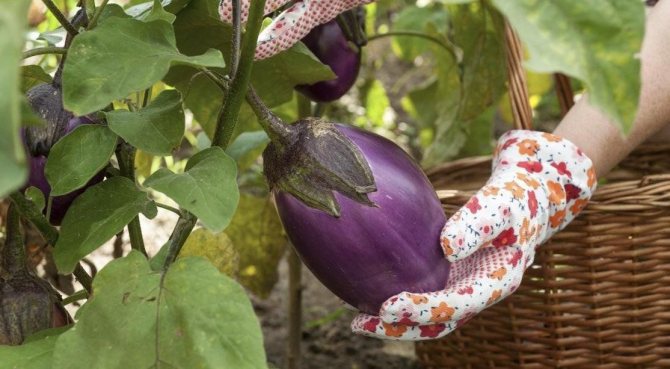

To summarize: growing eggplant, in fact, is not such a difficult task. The main thing is to study the mores of a given culture and provide it with proper care.
Preparing the soil for planting
The soil must be fertile, well dug up so that the planted seedlings can grow better. The soil is cleaned of weeds, old tops, and then spilled with clean water at least 2 times. Further, it is disinfected in order to destroy insect larvae and pathogens. It is best if the soil in the greenhouse is partially prepared in the autumn. It is loosened to a depth of about 12 cm. The heavy soil is dug again in the spring.
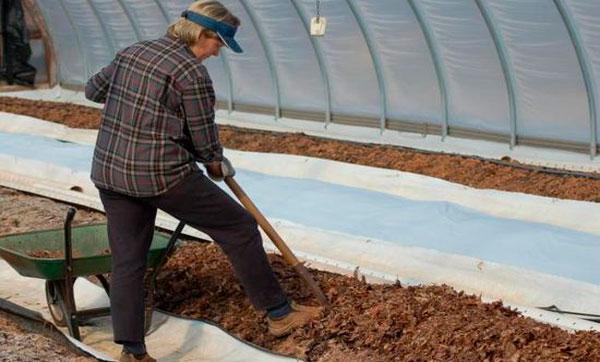

Disinfection can be carried out by treating the soil with steam, pouring it with boiling water. Sometimes chemical methods are also used - the soil is sprinkled with bleach at the rate of 100 g / m2 and covered with a rake. Formalin soil treatment helps well against blackleg. The treated beds are covered with foil for a day. Copes with pests and copper sulfate, from which a solution is prepared (2 tbsp. L / 10 l of water), with which the soil is spilled and then loosened.
Planting eggplants can be done in black soil, fertilized sandy loam and loam, but on heavy clay or acidic soils, this culture does not grow well. Dolomite flour will help to reduce the acidity of the soil at the rate of 2 tbsp. l. / m2.
Before planting, fertilizers are applied to the soil. Eggplants love organic feeding - rotted manure or compost. They are applied in the amount of 2-6 kg per 1m2 in the arable layer. You can also use a mullein solution, which spills the beds at the rate of 4 l / m2. Sawdust will make the soil looser.
To make the eggplants grow better, before planting, it is recommended to add a handful of ash to each hole prepared for them and mix it with the ground.
Planting eggplant seedlings in greenhouse soil
Eggplant seedlings are planted in a greenhouse when the bushes have at least 4 true leaves (or better, if there are 5-7 pieces of them).In general, the plants of this culture do not stretch, unlike tomatoes, they are compact enough and have strong roots. The eggplant bush, ready to move to the greenhouse, has a height of about 10-12 cm.
Eggplant seedlings are thoroughly watered with warm water before planting. Plants are sensitive to the conditions of planting, they love space. It is important to observe the following scheme for planting eggplants in a greenhouse: the bushes are planted in rows located at a distance of 60-70 cm from each other. There should be about 30-40 cm of free space between the plants themselves. The plant variety will also tell you how to plant eggplants in the greenhouse correctly - it is worth remembering that crops can have different heights and bushiness.
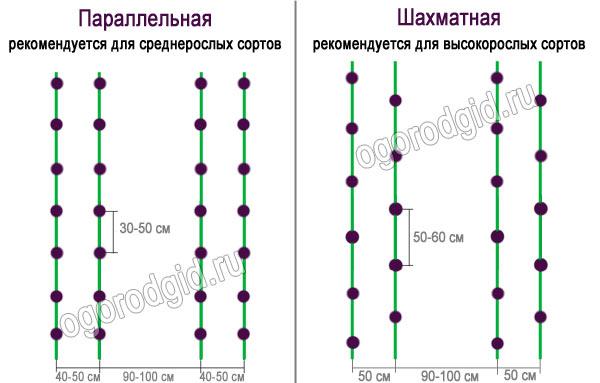

Eggplant does not like deep planting, therefore, holes should be prepared for seedlings with a depth equal to the height of the pot plus 2 cm (this is about 16-18 cm). Each of them spills 2 liters of water with the addition of a couple of potassium permanganate crystals. The bushes are neatly placed together with a lump of soil on the roots in the pits and covered with earth (by the way, before planting, the seedlings are shed well so that the soil becomes soft - this will not damage the plant during transplantation). If the crops were grown in peat pots, then before planting, the bottom is removed from them so that the eggplant roots can easily find their way to the ground.
Planting eggplants is not so difficult, it is more difficult to provide them with the correct living conditions in the greenhouse - to ensure that the soil temperature is optimal, watering is appropriate, light is sufficient, etc.
The first couple of days after moving to a permanent place of residence, eggplants in the greenhouse need to be shaded. It is also important to plant seedlings by tying them up so that massive greens do not break under their weight. This is especially true for bushes that have a fairly elongated and long stem. Low-growing varieties of eggplant do not need to be tied up.
Now you know when and how the seedlings of this type of plants are planted in the greenhouse, what care it needs in the first days. The time for the eggplant to take root is approximately 10-12 days. And at this time it is necessary to observe the plants, slightly loosen the soil around the bushes and slightly huddle the stems.
Recommended to read
Instilled in the cultivation of eggplant in a greenhouse
Schemes and rules for fertilizing eggplant
How to form eggplants in the greenhouse and outdoors
How to properly grow eggplants outdoors
Which greenhouse to choose?
Eggplant can grow in a greenhouse with or without heating. The second option is suitable for summer time, the greenhouse helps to maintain a stable microclimate, protects plants from gusts of wind, nighttime temperature drops, hail and other vagaries of the weather. Seedlings are planted in such a shelter in late spring.
Residents of cold regions, as well as those who plan at least 2 harvests per year, it is worth thinking about building a capital greenhouse, covered with film, glass or polycarbonate and equipped with a combined heating system.
Most available option - a greenhouse covered with a film... It retains heat well, transmits sunlight. However, a fragile film quickly breaks and deforms; such a coating will have to be changed every year. Glass is more durable, but it can crack under the weight of snow.
The best option greenhouse coverings - polycarbonate... It is not cheap, but it serves several seasons without any problems. By investing in such a structure, you will be able to harvest good crops and not worry about the annual restoration of the greenhouse. It is better to fix polycarbonate on a metal frame with a special treatment that protects the structure from corrosion.
Eggplant greenhouse can be arched or pitched... Wall structures are also possible, adjacent to the house, utility room and other structures. The height and size of the greenhouse depends on the capabilities of the owner.
Vegetables are best grown in soil, but some growers prefer shelving, increasing the usable area of greenhouses.
In order for the plants to develop well, greenhouses can be equipped with lighting. If the greenhouse is very large, recommended equip it with a system drip irrigation... Eggplant is a moisture-loving culture, such watering will help maintain the desired degree of soil moisture. Good ventilation is required.
It is better to heat the greenhouse in a combined way. Maintain the required temperature biofuel will help (a mixture of manure and straw, rotted and placed under the top layer of soil). You can heat the greenhouse using solar panels, an electric boiler or a fire that drives warm air through pipes. For express heating, heaters or stoves are useful.
What can you plant next to - mixed plantings
Eggplants are not lovers of neighbors, it is undesirable to grow them next to other crops. They feel more or less tolerable next to tomatoes or peppers, but plants do not want to coexist with cucumbers at all. If eggplants are grown next to tall varieties of tomatoes, they should be planted on the side of the greenhouse where there is most of the sun.
Eggplants can be planted on the beds where melons and legumes grew before. If nightshades grew in this place earlier, then the purple vegetable will feel bad - it is planted on such a ridge no earlier than 3 years later. They feel good, growing on the soil where onions, carrots, and early cabbage were previously cultivated.
Eggplant care
In order for the eggplant harvest to be good, it is important to create favorable living conditions for the plants. This culture is very sensitive to temperature, humidity, watering and other factors.
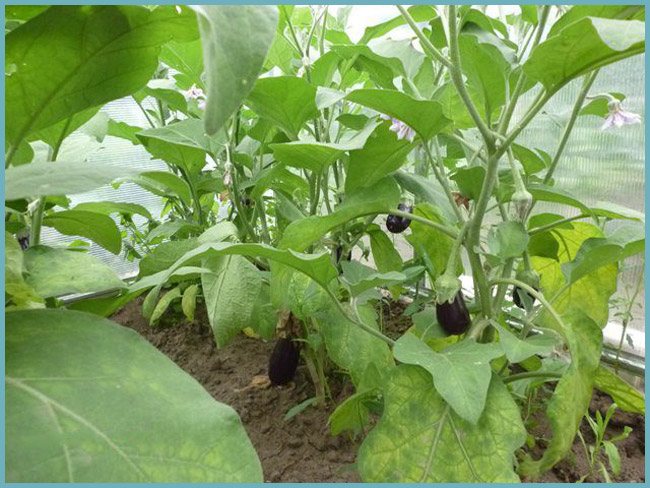

Eggplant care in the greenhouse
1. As soon as you plant the seedlings, do not disturb it for about 20 days - this time is necessary for the plants to adapt to new conditions. During this period, shade the plant and avoid situations where drafts are created in the greenhouse.
2. The ideal temperature in the eggplant greenhouse is no more than +28 degrees. Therefore, in hot weather, ventilate the greenhouse, but it should always be closed at night.
Attention! At a temperature of only +15 degrees, eggplants refuse to grow, and at +13 they begin to die altogether. Zero temperature during frosts will simply kill them. But strong heat also negatively affects them: at +40 degrees, ovaries will not appear on them.
3. Periodically loosen the soil around the stem, but not deeply, so as not to damage the root system. Row the earth to the plant. By the way, in order to save soil moisture, which is so necessary for eggplants, add a little peat to the soil, and in the heat, cover them from the scorching sun. You can also mulch the soil.
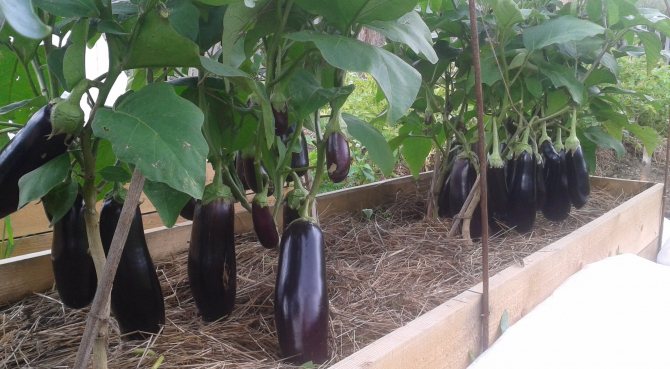

Eggplant beds can be mulched
4. Water the eggplants under the root in the morning with warm water, which should be heated to almost the air temperature - this is about 28-30 degrees. It's great if you take the time to create a drip irrigation system so that moisture is constantly supplied under the roots. After watering - after about half a day - loosen the soil. Remember that excessive watering contributes to the development of fungal diseases, and a lack of water will turn out to be tasteless fruits for you.
Attention! Freshly grown seedlings are watered no earlier than 5 days after they move to the greenhouse.
5. It is necessary to fertilize eggplants for the first time not earlier than 14 days after transplanting. This is done with any nitrogen fertilizers in accordance with the instructions (eggplants are big fans of nitrogen-containing dressings).


Nitrogen fertilizers (by forms of nitrogen)
After the ovaries appear, it will be nice to feed the eggplants with yeast and weed mash (the ingredients are mixed in a 5: 1 ratio).
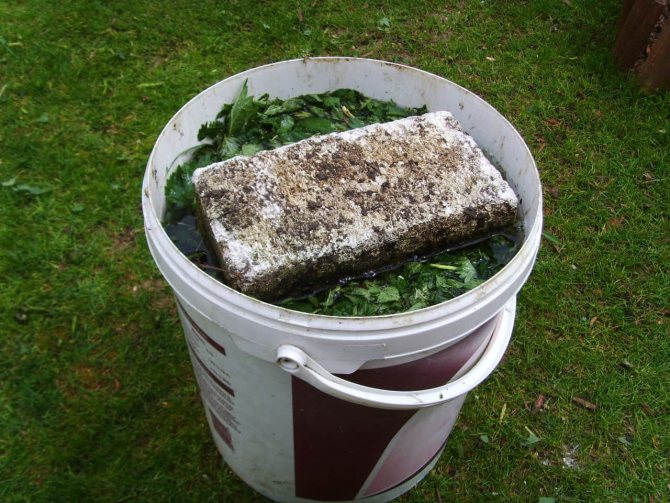

Plant fertilizer solution
Attention! Don't get carried away with organics. Eggplants love her, but because of her, the green part of the plants will grow, and the fruits will be small and frail. If the greens are developing rapidly, switch to potash fertilization.
6. Don't forget about pollination. In the greenhouse, you will have to do this yourself. Just shake the flowers of the plant. If the eggplants do not bloom well, you can treat them with special agents that enhance flowering.
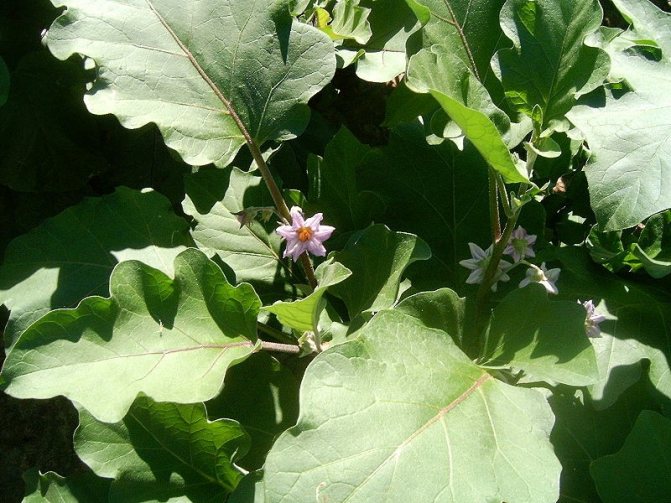

Don't forget about pollination!
7. Eggplants must be pinned, otherwise the bushes will grow strongly. The top of the main stem is removed when the bush grows to 30 cm. Then leave only the top 5 of the new shoots, pinch off the rest (about 20 leaves should remain).
8. To prevent the bushes from falling, they can be tied with strips of cloth to pegs driven into the ground. Low-growing varieties will save you from these troubles.
How to get quality eggplant seedlings
To find out the answer to this question, we recommend that you read this article now! In addition, it will probably be useful for you to know why tomatoes crack when ripe.

